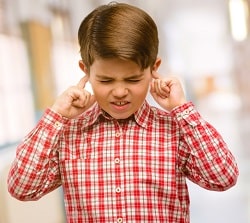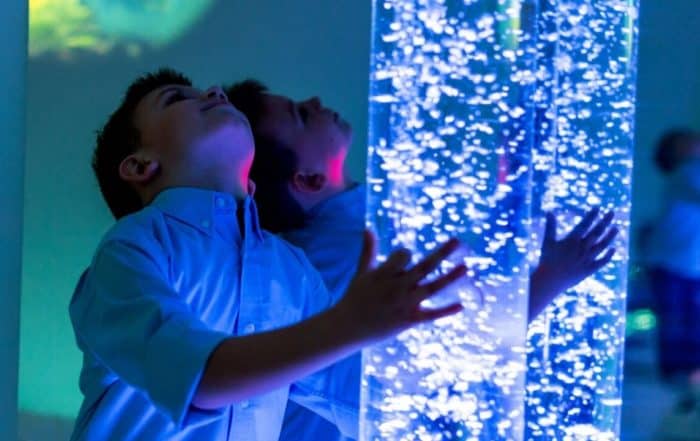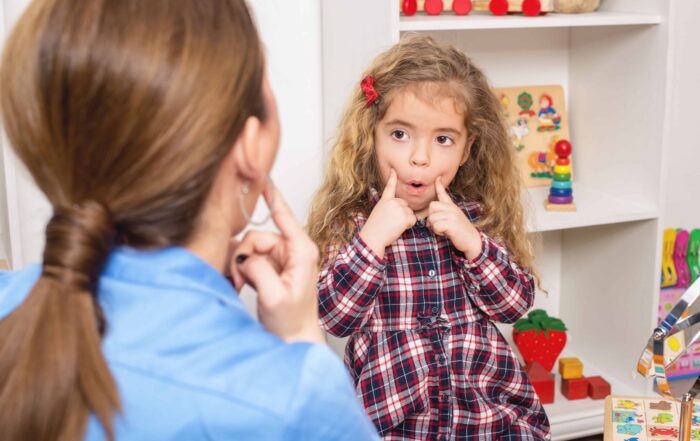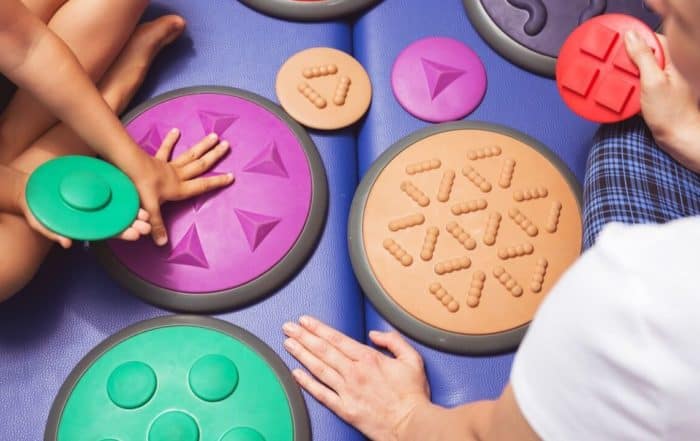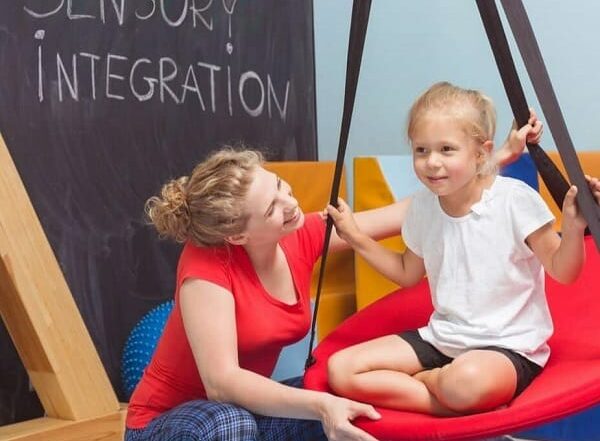Vanessa Rentschler, Au.D., CCC-A, C.A.S., discusses sensory considerations for social communication in autism. She highlights common auditory processing differences, available services, and the overlap of visual and auditory sensory processing in autism. The speaker emphasizes emerging therapeutic interventions and asserts the need for participatory research and collaborative care. Rentschler describes neurophysiological drivers of sensory differences and considers their impact on social communication. She summarizes the presentation and outlines the necessary frameworks for reimaging care before the Q&A.
Printable handouts are online HERE
In this webinar:
1:25 – Disclosures, background, and outline
5:10 – Auditory features in autism
7:35 – Services and evidence-based practices
10:30 – Auditory sensory processing
15:08 – Auditory and visual misalignment
19:10 – Impacts on communication
22:30 – Neurophysiological underpinnings
26:02 – Interventions and accessibility
30:04 – Therapeutic techniques
33:20 – Audiologists
38:45 – Neurodiversity-affirming standard of care
42:15 – Future research and accommodations
46:45 – Q&A
Auditory processing in autism
Rentschler describes common auditory processing differences in autism, including difficulties understanding spoken language, filtering out background noise from speech, and sound tolerance issues (5:10). The speaker outlines services typically provided for auditory processing, highlighting occupational therapy as one that best addresses sensory processing (7:35). She provides references for literature reviews on best auditory practices and underscores how difficult it is to create evidence-based interventions (9:00). The speaker asserts the importance of incorporating lived experiences into research and care tactics (10:10).
Learn more about establishing evidence-based interventions in autism in this free webinar.
The presenter discusses how auditory processing differences can impact an individual’s sensory gating or ability to filter, prioritize, and integrate sensory inputs. This plays into excitation/inhibition imbalances in autism and can also impact pain sensitivity and reactivity (11:50). Rentschler defines central gain as the brain’s ability to adapt baseline auditory conditions according to received stimuli (13:00). She explains that when individuals over-protect their ears (wear ear muffs all the time, even when noise is low), they may readjust their central gain which creates even more sensitivity to loud or normal sounds (14:40).
Auditory and visual misalignment
The presenter defines the temporal binding window (TBW) as the time it takes to organize sensory input into a cohesive percept (15:08). TBW is often longer in autism due to a mismatch between auditory and visual processing, which stems from atypical neural synchronization and brainstem differences (16:00). Rentschler emphasizes TBW plasticity and highlights its potential for successful auditory interventions (17:10). She reiterates that information from autistic people about their lived experiences is critical to guiding research and care (18:26).
Impacts on communication
The speaker considers how enhanced pitch perception and difficulties with prosody, or the ability to detect intonations in speech (e.g., identify sarcasm), appear in autism (19:10). She explains how difficulties with speech/noise localization can sometimes make it seem like your child is purposefully ignoring you and underscores that this is likely not the case (20:17). Rentschler notes a study that showed a direct correlation between the rate of detected/missed environmental sounds and the presence/severity of restrictive/repetitive behaviors. Similarly, auditory deficits have been found to exacerbate social difficulties in many neurodiverse groups (21:36). Language impairments, she continues, are also significantly related to abnormal lateralization of the functional language network in neurodiverse populations (22:30).
Neurophysiologic underpinnings
The presenter displays a diagram showing how auditory inputs travel across the left and right hemispheres of the brain depending on which ear receives the stimuli (23:39). While input received in the right ear travels directly to the left side of the brain, input received from the left must travel to the right hemisphere and then cross back to the left side through the Corpus Callosum. The Corpus Callosum is a bundle of nerve cells where the right and left hemispheres communicate (24:30). Rentschler explains all this to illustrate the significant differences in how the brain perceives sensory input across populations (25:30).
Interventions and accessibility
Hearing aids with remote microphones (often held by a teacher) help to filter out extra noise and are highly effective for increasing auditory processing (26:02). The speaker shares personal experiences with such microphones, underscoring their lack of accessibility due to poor insurance reimbursements (29:00). Rentschler reiterates brain plasticity and asserts that intervention focus must shift to training the auditory system instead of relying on tools which are not widely available (30:04). She discusses therapeutic techniques like binaural interaction, or how the ears work together to process speech, and highlights dichotic listenings as an efficient exercise for minimizing sound sensitivity. Phonemic entrainment, auditory-motor synchronization, and temporal processing remediation also show promise as short-term intensive interventions that produce long-lasting auditory shifts (31:20).
Audiologists
The presenter outlines general roles for audiologists, including ruling out hearing loss and targeting sound tolerance (33:20). Audiologists target processing issues by addressing bottom-up skills via binaural balance training, phonemic training, and rhythm and motor output training (36:05). Rentschler notes mixed results from working memory training and asserts the need to accept aspects of disability as natural instead of something that must be cured or fixed (37:28). She notes the severe lack of audiological practitioners, and offers viewers to contact her directly for assistance in finding their closest carer. She also emphasizes the need for educational support (33:20).
Critical takeaways
The speaker discusses a neurodiversity-affirming approach to social communication support, noting disability rights and universal design as concepts that improve access to care and quality of life for everyone (38:45). She notes the double empathy problem and encourages social skills training for neurotypical populations. Rentschler urges clinical professionals not to force eye contact with autistic patients as this provokes the stress response, which further impairs listening (39:45). Mental health, she continues, is paramount because no real learning can occur in the fight or flight response. She suggests avoiding power plays and being mindful of negative messaging that individuals may internalize as ableism (41:20).
What’s next?
Moving forward, Rentschler emphasizes the need for more rigorous research on the clinical feasibility of interventions. This research must include neurodivergent voices and community partnerships with local clinics. She states that clinical consensus must be reimagined in alignment with the disability rights paradigm. Systemic supports such as health insurance, education, and accommodations should also be reimagined with neurodiverse and disabled voices at the center (42:15).
Rentschler summarizes the presentation, highlighting the need for therapeutic auditory support and greater access to care. She reiterates the impact that sensory differences can have on skills necessary for social communication, mental health, and overall sense of agency. She asserts that we can (and must) provide effective sensory supports based on individual neurotypes (44:35). The presenter provides references (45:10) and thanks before the Q&A session (46:45).
Presented by:
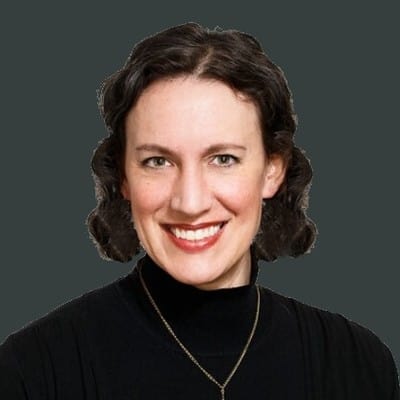
Take the knowledge quiz
Can’t see the quiz below? Take it online HERE
Sensory Considerations for Social Communication
Vanessa Rentschler, Au.D., CCC-A, C.A.S., discusses sensory considerations for social communication in autism. She highlights common auditory processing differences, available services, and the overlap of visual and auditory sensory processing in
Pain, Sensory Issues and Autism
Dr. Tami Bar-shalita, Merry Kalingal Levi, and Dr. Yelena Granovsky explore the intricate connections between pain, sensory perception, and autism. They discuss quantitative and qualitative research findings that shed light on the
Editorial: Revisiting Two Lesser-Known Teaching Strategies to Enhance Speech Production in Autism
In this editorial, I would like to shed light on two methods for improving the speech production of individuals on the autism spectrum, discuss potential neurological factors that may underlie their effectiveness,
Autism and Ehlers-Danlos Syndrome – Updates
Dr. Emily Casanova and Rosie Head discuss research updates on Ehlers-Danlos Syndromes (EDS) and their overlap with autism. Casanova outlines ongoing research investigations into the genetic factors that contribute to the expression of
Live Q&A: Sensory Strategies at Home
Moira Peña, BScOT, MOT, OT, Reg. (Ont.), answers questions about sensory strategies for home. This recorded live question and answer session was a follow-up to our two-part series on brain and sensory processing
Part 2: Sensory-Friendly Strategies for Home
Moira Peña, BScOT, MOT, OT Reg (Ont.), discusses sensory processing strategies for home. She describes how atypical sensory processing affects lived experiences of individuals with autism and outlines three sensory profiles.


